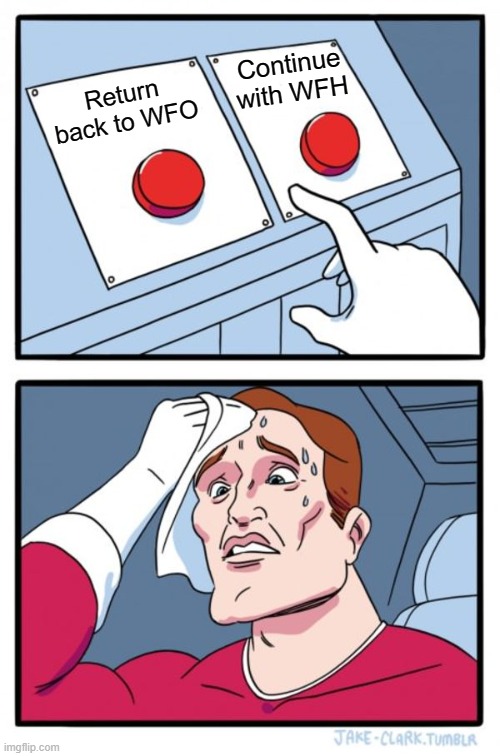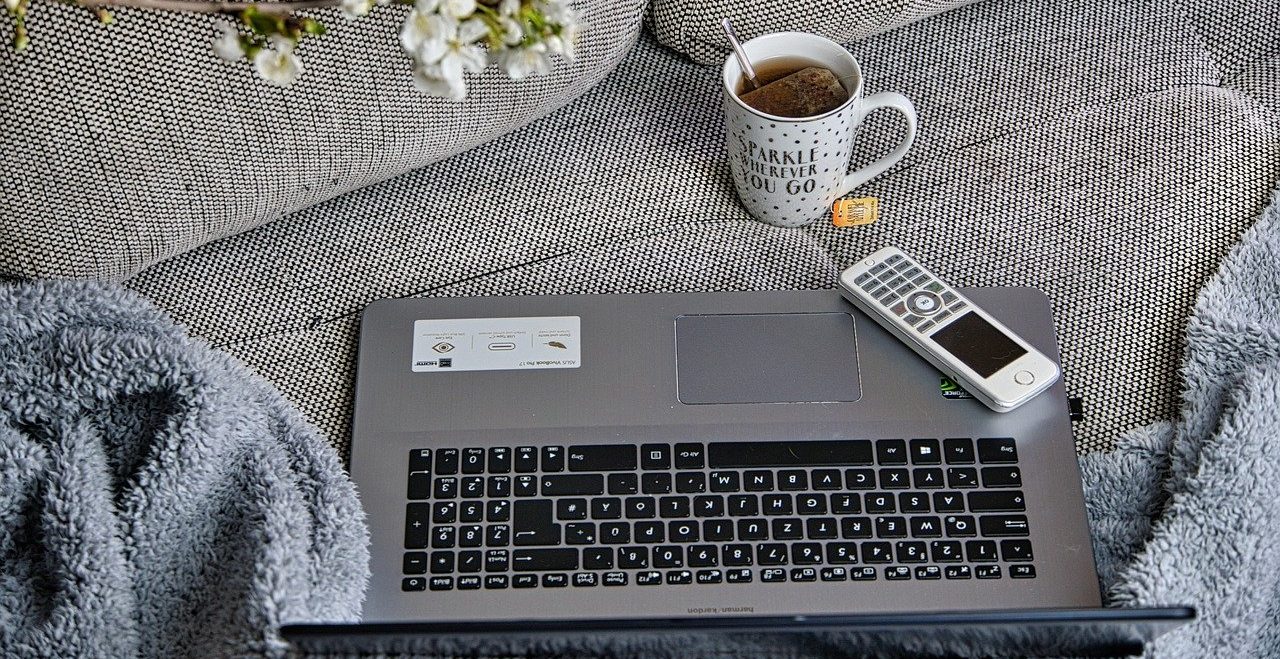Living the dream or stuck at home?
Too much of a good thing... can be a bad thing?
The concept of Work From Home (WFH, in short), can be seen as a blessing or a curse to the average salaryman. As the world continues to live with the unpredictable pandemic into 2021, businesses worldwide have continued to enforce WFH as a precautionary measurement for their employees’ health security. For those who have worked years on end through the same daily routine, the sudden shift to WFH can be daunting to say the least. The initial excitement of the new norm can also cause the deepest plunge into culture shock for the less adaptive of us.
A recurring theme many have faced is when tending to a pile of unfolded laundry felt like it should take precedence over completing their current tasks, that’s when they knew that procrastination has reared its sinister head from around the corner. A by-product from more autonomy, it has surely been exacerbated by the new WFH arrangements.
Get rid of the cat!
So you see your cat minding its own business right beside you as you’re up all night finishing up your paper for tomorrow. Of course your natural instinct as the owner would be to reach over, grab them by the belly, lift them up and start torturing the poor soul to your hearts content. In hindsight, It’s not something logical or a rational decision to interfere with your cat’s nap time while you’re on a strict deadline. Even so, it’s an itch that you just have to satisfy right at that moment.
Similarly to the cat, menial chores often provides the same form of temporary escapism under the guise of perceived urgency. Simply put, washing the dishes, vacuuming the carpet, mopping the tiles or scrubbing the toilets are not chores that you have to do immediately but merely distractions to your main work tasks. You are fooling yourself into thinking you’re accomplishing objectives but in all the wrong areas. Your house may be cleaner than ever but it won’t impress the product manager expecting a project overdue tomorrow.

You can feel it’s just waiting to paw the keyboard at any time now
While most who never had problems adapting to WFH would proudly chalk it up to a strict and disciplined lifestyle, it’s understandable that not everyone is enthusiastic about jumping into yet another routine right after escaping the torment of the 9-to-5. As someone who exclusively worked from home for his entire career, I understand it can be very enticing when you can justify wearing your underwear as a dress code or on a more serious note, being able to be around our families more often. However, it is equally as important to re-clarify our commitments to the company as an employee with this given privilege. Good news is, you don’t have to do a complete migration to a rigid lifestyle. Over the course of over 2 years of WFH experience, I can assure you that focusing on a few primary pain points would be enough to make WFH as enjoyable as you may have imagined.
Now you can also be good at WFH!
Disclaimer: All points I’ll be making in the following section pertains to my own experience and its solutions curated to solve the difficult experiences I’ve faced before. It’s not the silver bullet to end procrastination for everyone but I’d say their pretty decent actionable first steps to dive into!
1. Set distinct boundaries for your work space
Make it clear where you step into and out of work. This can be by prepping another room solely for office use, dedicating a space in the kitchen or even marking your territory with tape. Make sure that everyone in the household respects this boundary, including yourself. This segregation of labor and leisure spaces will allow your body to refamiliarize with its surrounding, slowly adjusting it to the new norm environment.
Ideally you’d want your space to be away from comfort places like the bedroom. If you’re planning to use a corner of the living room, make sure that it’s the furthest away from the noisiest part of the room – noise cancellation headphones would be a plus but not a necessity. If you have kids, let them know beforehand to not enter this space, you won’t be able to entertain them anyways once you’re neck deep into the zone. Save play time for after the day is over or in between breaks. It’ll be more rewarding this way – intermittent recharging time throughout the day won’t hurt anyone, so make sure to take full advantage of this!
2. Minimize the frequency of exiting and entering your work space
Just like how a 5 minute water cooler or pantry break can drag into 30 minutes long conversations, unnecessary breaks in between are a distraction. Just because you can go to the kitchen to grab a quick snack, doesn’t mean you’re obligated to fulfil that want every single time. I’m serious, you’ll just gain more kilograms going at that rate. Remember that the goal is to minimize distraction wherever possible. Take a breather of course but don’t make it an excuse to postpone your work indefinitely. Ideally, you want to maintain or reduce your work time for the same or greater amount of productivity output.
Whenever you feel the need to grab a snack or go to the toilet, instead make it a habit to – get up, do a short lap around the room, maybe a few jumping jacks or stretches, and then reassess yourself. You’ll be surprised how much those cravings would subside. It’s not hunger or your bladder needing emptying every half and hour, it’s just your body telling you that it needs a break away from the screen. There’s really nothing more to it than that!
3. Set up an appropriate WFH schedule
It can be tempting to bring work past the 5pm cut off mark. This is another case of just because you can, doesn’t mean that you should. The idealized 2 hour breaks in between every 1 hour of work can be quite detrimental to your productivity flow. Not only will this bleed labor time into your leisure time, it will start to perpetuate the feeling of working non-stop as there was no clear boundary set earlier on.
As someone who prides themselves as a workaholic, I do find myself often pushing off morning work to later on in the evening and progressively getting later and later. I then find myself working more hours on overtime and getting stressed over the inability to pursue my own hobbies after dinner. It was staying true to a schedule that helped me break out of that bedtime revenge procrastination cycle. My core hours of work now are in the afternoons with a few dips into the evening but never past 8pm. Find your own schedule and adjust according to what works best for you!
4. Be your own task manager
While it can be liberating when there is no boss breathing down your neck to get things done ASAP, it can be just as easy to lose the sense of urgency over time. The main role of the manager is to get things in line and in making sure that the work is done in an efficient, timely manner – WFH however diminishes this control. Difficulty of management over Zoom calls aside, it is crucial that you hold yourself to a degree of accountability to the work you’re committed to.
I recommend any task management software such as Trello, Notion, Asana or in the case of Synapse’s community – a custom made solution to handle their day-to-day tasks in one single app. A simple way of keeping track of your current and on going tasks goes a long way. Couple that with Francesco Cirillo’s Pomodoro technique of time management, you’ll surely be able to scare up your productivity level exponentially!
5. Notify the people around you
As we enter a new age where WFH is becoming more common, it is important to take a empathized look to those who are affected by this change of lifestyle. While you may be at home 24/7, you may not be able to attend to the household needs when you’re working and that’s completely fine – do not let anyone guilt trip you into thinking otherwise.
This is an aspect of WFH that people who are used to the conventional Work From Office (WFO) would need some time to adjust. Be sure to take some time off to explain to your spouses, parents, kids or even pets regarding WFH and how they can contribute to helping you be better in your new environment.
Should we normalize this?

It shouldn’t be that difficult, right?
WFH are deemed necessary at this point in time for many countries in lockdown whilst those fortunate enough to be impacted minimally by COVID-19 is slowly returning the WFO arrangement. However, I have also seen pushes of a hybrid version between WFH and WFO, advocating a 3-2-2 weekly cycle (3 days in office, 2 days at home, 2 days off) moving forward beyond life with the pandemic. It may be worthwhile for more businesses to look into adopting this format as a way of giving employees health benefits (mental, financial and physical health) as part of their compensation package. Perhaps it can be empowering to them as well if they get to decide which working arrangements they’re more comfortable with.
Personally speaking, I believe that reprioritizing the importance of employee health is the first step in building a well managed company of the future. As more studies are being done to discover the effects of WFH, I would not dismiss it as simply a phase of a humanity’s lifetime. For now, the onus is on us to adapt to the new norm as WFH is becoming more and more integrated into our daily lives.

